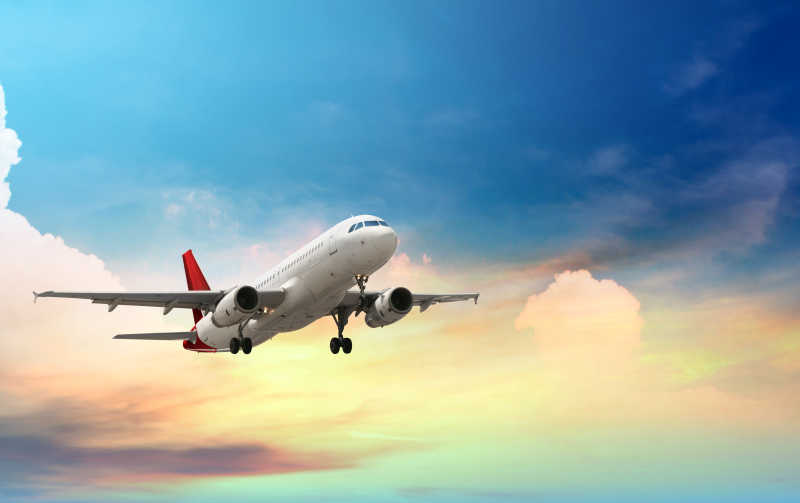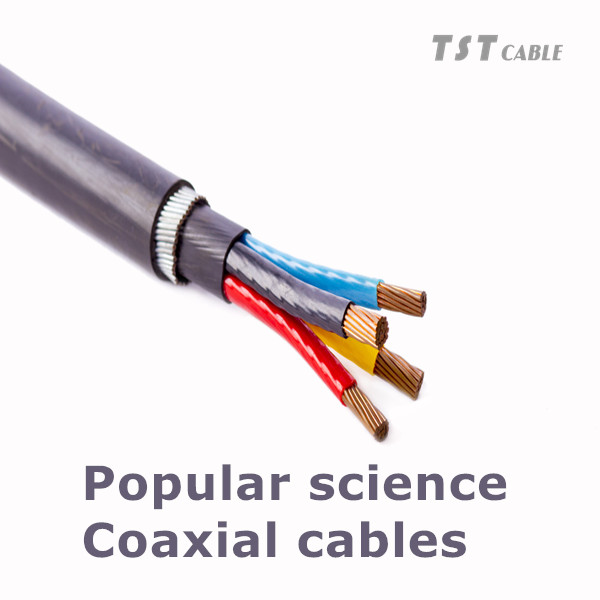aircraft control cable synopsis
Aerospace cables are data cables used for signaling, data applications and in-flight entertainment on aircraft. Data cables commonly used on aircraft include Fibre Channel, Ethernet, USB, Digital Video Interface and Serial ATA data cables. They are different from ordinary data cables because of the additional specifications and standards they must meet. On an airplane, cables act as if they were human blood vessels and neural networks, supplying power to various system devices and serving as information transmission. The performance of the cable is related to the aircraft safety, reliability and economy, etc. In general, for the aircraft design manufacturers, according to the current level of development of the aircraft control cable, as well as the aircraft’s own performance requirements and environmental characteristics of the selection of one or more suitable conductor.
With the improvement of aircraft performance requirements, the amount of single cable is also gradually increasing, its performance requirements are also more and more demanding, the performance of aviation cable and its materials, construction and other factors are closely related. With the continuous optimization of material science and cable structure, the performance of aviation cables continues to improve, more and more widely used. The performance of the cable is related to the safety and performance of the aircraft, and its selection is particularly important. A good cable should have at least the following characteristics: good electrical performance, high temperature resistance, resistance to resistance, flame retardant, strong chemical resistance, long life, light weight and other characteristics.
In addition to this, with the extensive use of electromagnetically sensitive equipment in modern aircraft, it is necessary to use shielded conductors in order to ensure that the equipment is not subject to electromagnetic interference (which may result in a loss of accuracy or even complete failure of the equipment). In addition, the cable should be mechanically strong enough to withstand the movement of the conductor, flexing, vibration, friction, or other mechanical problems that may be encountered in flight.

Aviation cable aircraft control cable product characteristics:
Aviation cable is a special cable with the characteristics of fire protection, anticorrosion, high temperature resistance, low temperature resistance, radiation resistance, etc. The product is small in size, light in weight, flame retardant, high and low temperature resistance, heat aging resistance, chemical corrosion resistance, resistance to acid, alkali, oil and other organic solvents, and other excellent features.
Aviation cable has the performance of small outer diameter, light weight, wide range of use temperature, oil resistance, abrasion resistance, acid and alkali and various chemical reagents corrosion resistance, aging resistance, high temperature resistance, vibration resistance, impact resistance, easy to install, non-combustible and so on.
Scope of application of aviation cable:
Aeronautical cables are widely used in connection installation lines or signal transmission including aircraft, satellites, rockets and other flying machines. It can be used in high and low temperatures and various harsh environments for electrical appliances, instruments and equipment electrical connection lines, and is suitable for the aviation industry, the electronics industry, and some other electrical equipment and instrumentation lines under high temperature conditions.
Characteristics of aerospace fluoropolymer insulated series (AF-250, FF46-2, SFF, etc.) cables:
Aerospace fluoropolymer insulated series (AF-250, FF46-2, SFF, etc.) cables, with excellent electrical and mechanical properties, small size, light weight, flame retardant, high and low temperature resistance, heat aging, chemical resistance, acid and alkali oils and other organic solvents, and other characteristics, are mainly used in the aerospace, arms and ships in the environment of the harsher occasions of the electrical equipment, instrumentation line connections and high-frequency signal transmission. Mainly used in aerospace, weapons and ships in harsh environments, electrical equipment, instrumentation, line connections and high-frequency signal transmission, etc., the working temperature of the product can be as low as -65 ℃, up to 250 ℃ -300 ℃
Tin-plated copper-core polyperfluoroethylene propylene insulated wire and cable selection guide:
Mainly used in airplanes, aircraft or high temperature, strong corrosive and other harsh environments such as the use of the installation line, has a good resistance to high temperature and corrosion characteristics.
1. Tinned copper core polyperfluoroethylene propylene insulated wire and cable
Mainly used in aircraft, aircraft or high temperature, strong corrosive and other harsh environments such as the use of the installation line, has a good resistance to high temperature and corrosion characteristics. Executive standard GJB 773A-2000 Rated voltage 600V Rated operating temperature 150℃ Minimum operating ambient temperature -65℃ Model FF46-1. FF46P11-1. FF46H3-1. FF46P11H3-1. FF46P13H3-1. FF46H10-1. FF46P11H10-1. FF46P13H10-1
2.Radiation-resistant low-temperature flexible conductors for aerospace applications
It is insulated with special composite film winding, braided with synthetic fiber and treated with special coating. Wire by -196 ℃ dynamic bending, high and low temperature impact, irradiation and other life trial, can still maintain good flexibility and electrical insulation properties, while the wire by the vacuum loss test has also reached the degassing indicators specified by NASA. Ambient temperature -120 ℃ ~ +120 ℃ rated operating voltage 600V.AC. radiation 1 * 10-4Pa TML ≤ 1%, CVCM ≤ 1% life: in -196 ℃ after 10,000 times of bending, and then 600V.AC insulation does not breakdown.
3. Irradiation-resistant insulated wire for aerospace use
Executive standard Q/SC-HK-001 Minimum ambient temperature -65℃ Rated voltage: AC 250V Maximum cumulative irradiation dose 108rad Rated temperature 150℃ Model: HG-NFJ-2, HG-NFJP-2, HGNFJPH-2.
4. Irradiation-resistant film-wrapped insulated wire for aerospace applications
Suitable for aerospace vehicles. The wires are irradiated and can be used in environments where cosmic rays and other radiation exist. Executive standard Q/SC-HK-002 Rated voltage: AC 250V Rated temperature 200℃ Minimum ambient temperature -65℃ Maximum cumulative irradiation dose 1010rad Model: HG-NFL-2. HG-NFLP-2.
5.Polyimide insulated wire and cable for aviation
Mainly used in aviation, aerospace, satellite, and atomic energy industry installation line. The product has excellent resistance to radiation and high temperature and other properties. Executive standard GJB 76-1985 rated voltage 600V rated temperature 200 ℃ minimum operating temperature -60 ℃ Model: FY1-2, FY2-2, FY1P-2, FY1P-2, FY1P-2, FY1PB-2.
6.Aerospace unplugging and signal transmission long cable
Applied to the connection cable between the satellite ground signal receiver and ground signal processing equipment, the cable is required to have good signal transmission performance, cable soft and other characteristics. Executive standard Q/SC-HG004 Model HG-FPU-250 Rated voltage 250V (AC.) Operating temperature -40 ~ 80 ℃ Product main technical indicators: 1. DC resistance of the conductor at 20 ℃ ≤ 36.0 Ω / km; 2. Withstand voltage: 1500V between the conductor and the conductor, conductor and shielding * 1min does not break down 3. Minimum bending radius of the cable 10D.
7. Nickel-plated copper core PTFE insulated light installation cable
It is mainly used as installation line for special occasions such as high temperature resistance and corrosion resistance on airplanes and aircrafts, with good high temperature and corrosion resistance. Execution standard GJB 773A-2000 Rated voltage 250V Rated working temperature 260℃ Minimum operating ambient temperature -65℃ Models: FF4-3Q, FF4P31-3Q, FF4H9-3Q, FF4P31H9-3Q, FF4P33H9-3Q, FF4H5-3Q, FF4P31H5-3Q, FF4P33H5-3Q. FF4P33H5-3Q.
8. Silver-plated copper core PTFE insulated light installation wire
It is mainly used as installation wire for special occasions such as high temperature resistance and corrosion resistance on airplanes and aircrafts, and has good high temperature and corrosion resistance. Executive standard GJB 773A-2000 Rated voltage 600V Rated operating temperature 200℃ Minimum operating ambient temperature -65℃ Model: FF4-2Q. FF4P21-2Q. FF4P31-2Q. FF4H3-2Q. FF4P21H3-2Q. FF4P31H3-2Q. FF4P23H3-2Q. FF4P33H3-2Q. FF4H5-2Q. FF4H4H5-2Q. FF4H5-2Q. FF4H5-2Q. FF4H5-2Q. FF4H5-2Q. FF4H5-2Q. FF4H5-2Q. FF4H5-2Q. FF4H5-2Q. FF4P21H5-2Q. FF4P31H5-2Q. FF4P23H5-2Q. FF4P33H5-2Q.
9. Tinned copper core ethylene-tetrafluoroethylene copolymer insulated wire and cable
Mainly used in aircraft, aircraft on high temperature, corrosion resistance and other special occasions of the installation line, has good high temperature and corrosion resistance. Executive standard GJB 773A-2000 Rated voltage 600V Rated operating temperature 150℃ Minimum operating ambient temperature -65℃ Model: FF40-1. FF40P11-1. FF40H10-1. FF40P11H10-1. FF40P13H10-1.
10. Cross-linked ethylene-tetrafluoroethylene copolymer insulated wire and cable
Mainly used in aircraft, aircraft on the high temperature, corrosion resistance and other special occasions of the installation line, has a good resistance to high temperature and corrosion resistance. Executive Standard GJB 773A-2000 Rated Voltage 600V Rated Operating Temperature 150℃ (Tin-plated Copper Conductor) 200℃ (Silver-plated Copper Conductor) Minimum Operating Ambient Temperature -65℃ Models: FF40J. FF40JP1. FF40JP2. FF40JP1H11. FF40JP2H11. FF40JP1H10. FF40JP2H10. FF40JP1H3. FF40JP2H3. FF40JH10. FF40JH3. FF40JH10.
11.Nickel-plated copper core PTFE/glass wire combination insulated wire and cable
The product has a small outer diameter, light weight, wide temperature range, oil resistance, abrasion resistance, resistance to acid and alkali and all kinds of chemical reagents, aging resistance, high temperature resistance, vibration resistance, shock resistance, easy to install, non-combustible and other excellent performance. It can be used in high and low temperatures and all kinds of harsh environments for electrical appliances, instruments, equipment, electrical connection lines, applicable to the aviation industry, the electronics industry and other high-temperature conditions of electrical equipment and instrumentation lines. Executive standard GJB 773A-2000 Rated voltage 600V Rated working temperature 260℃ Minimum ambient temperature -65℃ Model: FF44-3, FF44H5-3, FF44H7-3, FF44P31-3, FF44P31H7-3, FF44P31H5-3, FF44P33H7-3, FF44P33H5-3, FF44P33H7-3, FF44P33H5-3, FF44P33H5-3. FF44P33H7-3.
TST Cables Aerospace Cables Related Products

Coaxial Cables: Coaxial cables are widely used in aircraft communication systems due to their ability to handle high frequencies and provide excellent signal transmission. They are commonly used for data transfer, video signals, and RF applications.
Twisted Pair Cables with Shielding: These cables, with shielding surrounding the twisted pairs, offer effective EMI protection and are often used in digital communication systems.
Fiber Optic Cables: Fiber optic cables are increasingly being used in aircraft communication systems due to their high bandwidth, immunity to electromagnetic interference, and lightweight characteristics. They are well-suited for long-distance transmission of large amounts of data.
Aerospace-grade Cables: These cables are specifically designed and manufactured to meet the stringent requirements of aviation applications. They are made from high-quality materials and possess excellent conductivity, mechanical strength, temperature resistance, and fire resistance.
Shielded Cables: Shielded cables provide additional protection, preventing electromagnetic interference (EMI) from affecting the performance of aircraft lighting systems. They help ensure reliable and uninterrupted lighting operations.
Lightweight Cables: Manufacturers have developed lightweight cable solutions that provide the necessary strength and performance while minimizing weight. These cables help reduce the overall weight of the aircraft, enhancing fuel efficiency and saving operational costs.
Also available in:
English

